If you’re like me and science wasn’t your favorite subject in school, you might wonder if you’re equipped to teach science skills to children. But science doesn’t have to be so intimidating! Doing science activities with preschool-aged children might even help your own scientific understanding of the world.
Science activities don’t necessarily require all the structure and setup we remember from biology labs in school. In fact, children may learn more from not-so-structured, play-based activities. “At ages 3-5, play-based activities are important for children to learn so that they can explore, discover and gain knowledge about the world,” says Emma Armstrong-Carter, a developmental psychologist and post-doctoral researcher at UNC Chapel Hill. “It is a foundation for more formal academic instruction that typically comes later.”
According to Sally Macaluso, a special education preschool teacher who runs the educational blog Tenderhearted Teacher, parents and caregivers can teach science through everyday activities. “As parents, we often expose our little ones to mathematical and scientific concepts without even realizing it,” says Macaluso. “So, it’s important to be aware of how to make the best of those moments to ensure truly meaningful learning experiences for our kiddos.”
The following science activities for preschoolers, collected from preschool teachers, social media and my own experience working with preschool-aged children, offer fun, hands-on learning. They’ll also get kids using several of the scientific basics, from making observations and asking questions to forming a hypothesis. Yes, really! Try them with your favorite preschooler.
1. Gardening
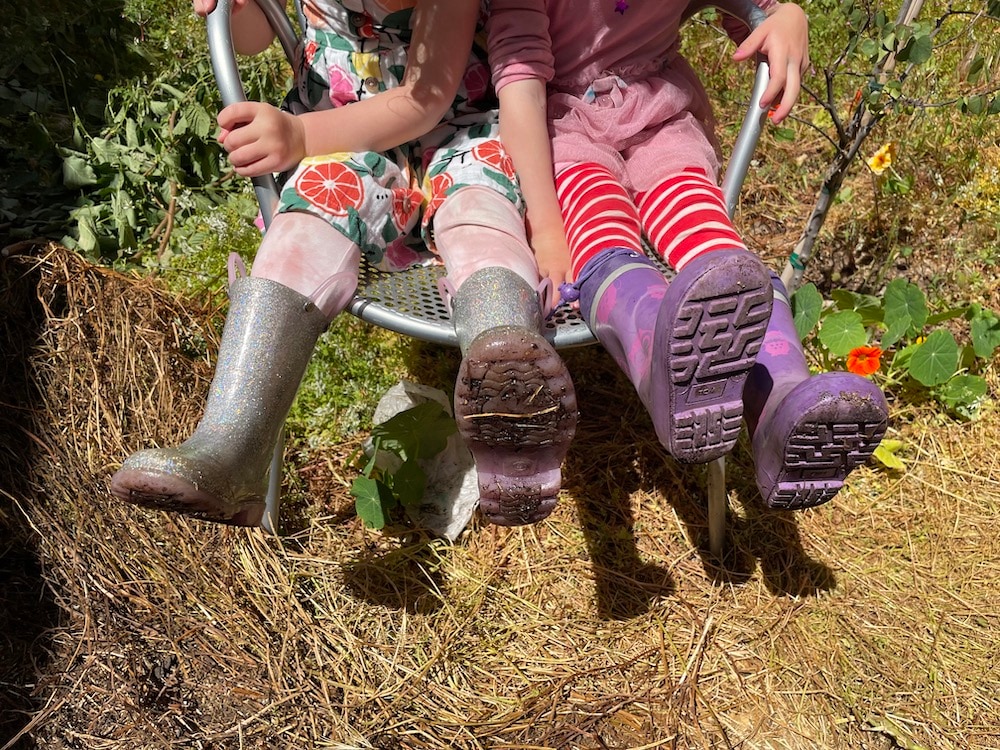
The science: There are so many scientific lessons that go along with growing plants — like learning how plants get sunlight or how they use water. Whether you’re a new gardener or a seasoned pro, find ways to include the child and explain the scientific processes along the way.
The activity: Here’s a simple gardening project the kids in my preschool classroom do every spring. Get a few fava beans, wrap them in a wet paper towel and put them in a clear sandwich bag. Tape the bag to a sunny window, and watch how the fava beans sprout and grow, which can happen within a week of starting the project. Once it’s ready, you can plant it in your garden or a community garden and continue to track its growth.
2. Mixing oil and water (or at least trying)
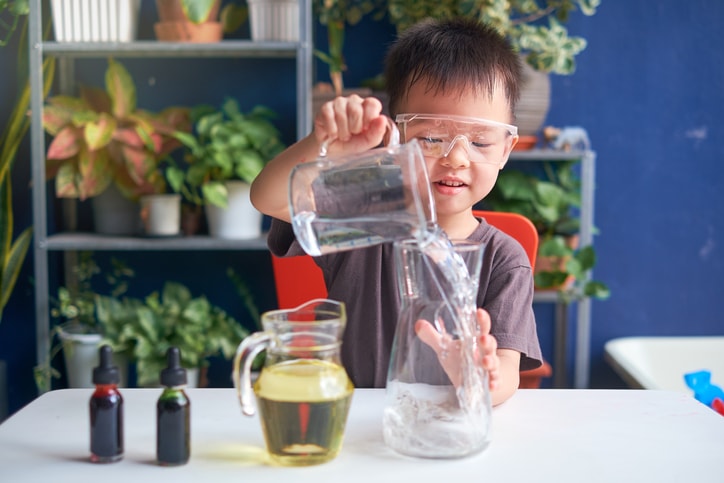
The science: As adults, most of us have long understood oil and water don’t mix, and some of us even know that’s because oil and water are different densities. However, it’s super fun to teach kids this science lesson by combining the two and watching how they behave.
The activity: Set up this simple oil and water activity with items from your pantry. Take a few clear cups and fill half the cups with vegetable oil and half with water. Dye the water different colors using food coloring. Then, show the child how to use a dropper to suck up colored water and release it into the oil. Because of the different densities of oil and water — oil is less dense so it floats — the two won’t mix, creating super cool and colorful bubbles!
3. Creating colorful gas bubbles
The science: Most of us remember putting an Alka-Seltzer in a soda bottle and watching the soda erupt like a volcano. This activity demonstrates the same reaction and is less messy. The tablet releases carbon dioxide, an important gas for little scientists to learn about.
The activity: Take the classic oil and water activity to the next level by making your own lava lamps, like Allison @inspired_little_learners shows on Instagram. Fill a clear glass with 2/3 vegetable oil and the rest with water. Add a few drops of food coloring in your favorite color. Finally, add a few seltzer tablets and watch the lamp transform. It might be tempting to complete these steps for your child, but try to encourage them to complete some of these steps on their own or with your help.
4. Color mixing
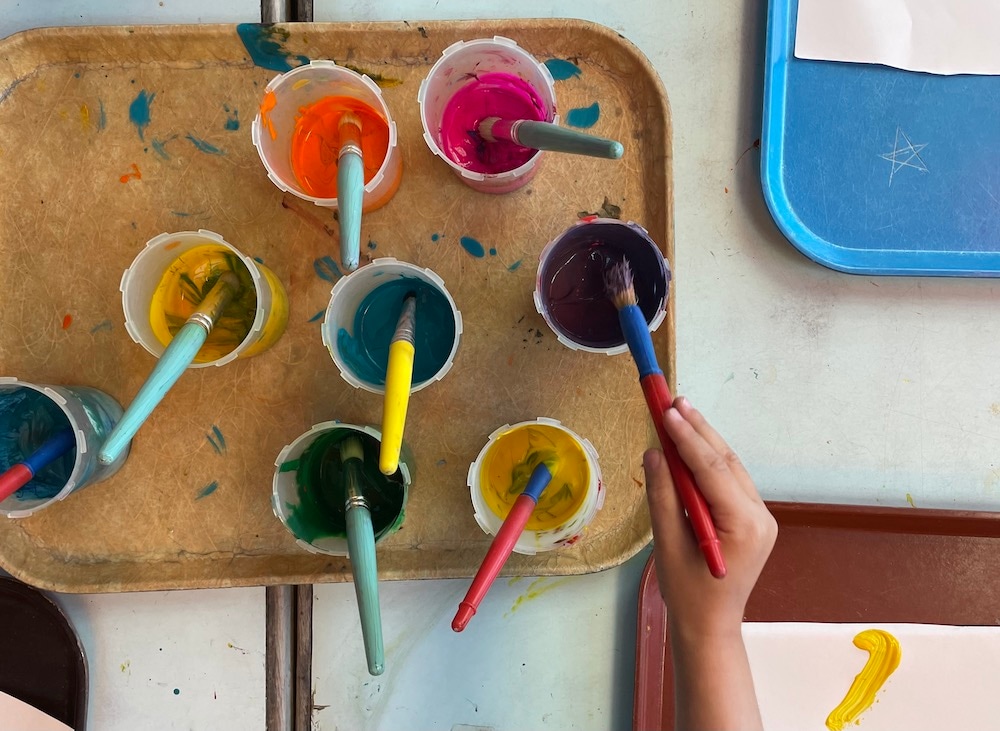
The science: This science activity for preschoolers, recommended by Macaluso, will help children learn how primary colors mix to make secondary colors. You can also explain the basics of how humans see colors through light traveling to our eyes, specifically the rods and cones within the eyes.
The activity: Set up some paints of different colors and allow the child to mix them together to see what new colors form. Start with yellow, red and blue and model how mixing two together will create familiar colors like green, purple and orange.
5. Making water shapes
The science: Help kids learn about conservation properties and how liquids change shapes depending on the container they’re in. This is an important concept in understanding differences betweens solids, liquids and gasses.
The activity: Grab some cups, bowls and containers of different sizes and fill one of them with water. Fill one of them with water and let the child pour the water from one container to another. You can also grab something solid, like a small block or toy, and ask the child to show you if the solid changes shapes when you move it between containers.
6. Cooking
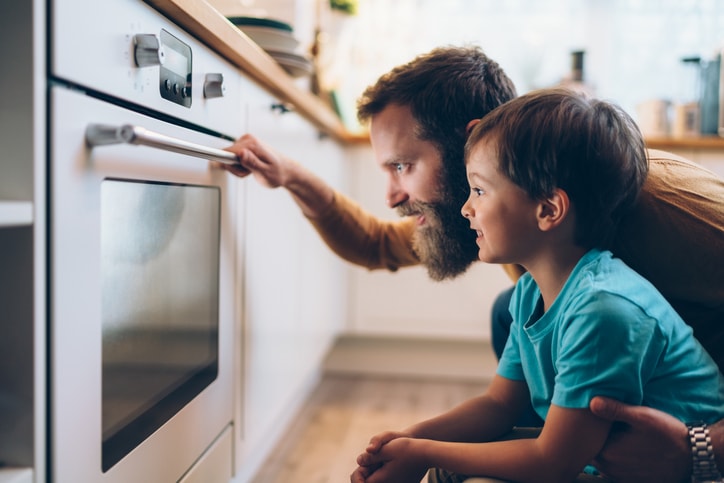
The science: Helping out in the kitchen can expose a preschooler to many scientific concepts. As Macaluso points out, “exploring different foods and ingredients can introduce our young children to science concepts such as temperature, hot vs. cold and changes in matter.”
The activity: You can ask the child to help you pour water in a pot and show them how to safely turn on an oven or stove. If the child doesn’t feel like helping, you can simply explain the scientific processes behind what you’re doing while you cook.
Read more:
6. Creating static electricity
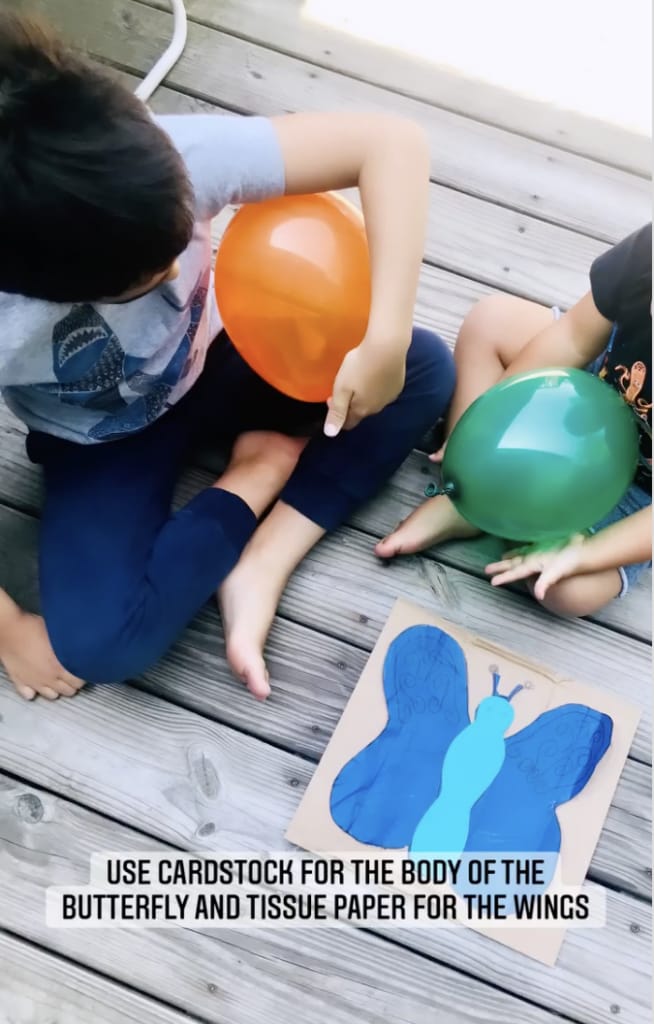
The science: Static electricity is a great introduction to understanding the science behind electricity in general. Concepts like electrons and their positive or negative charges can be explained in simple terms to begin a basic understanding of electricity.
The activity: This balloon static butterfly activity from Lau Camargo @thelifeoflalakm on Instagram is cute and teaches about electricity. Cut some tissue paper out in the shape of a butterfly and glue the center of it to a piece of cardboard, making sure not to glue down the wings. Add some googly eyes and let the child decorate the butterfly to make it their own. Then blow up a balloon. Have the child rub the balloon on their hair or the carpet to charge it up with electricity. Then, hold the balloon over the butterfly and watch the wings lift up!
8. Building bridges that hold up
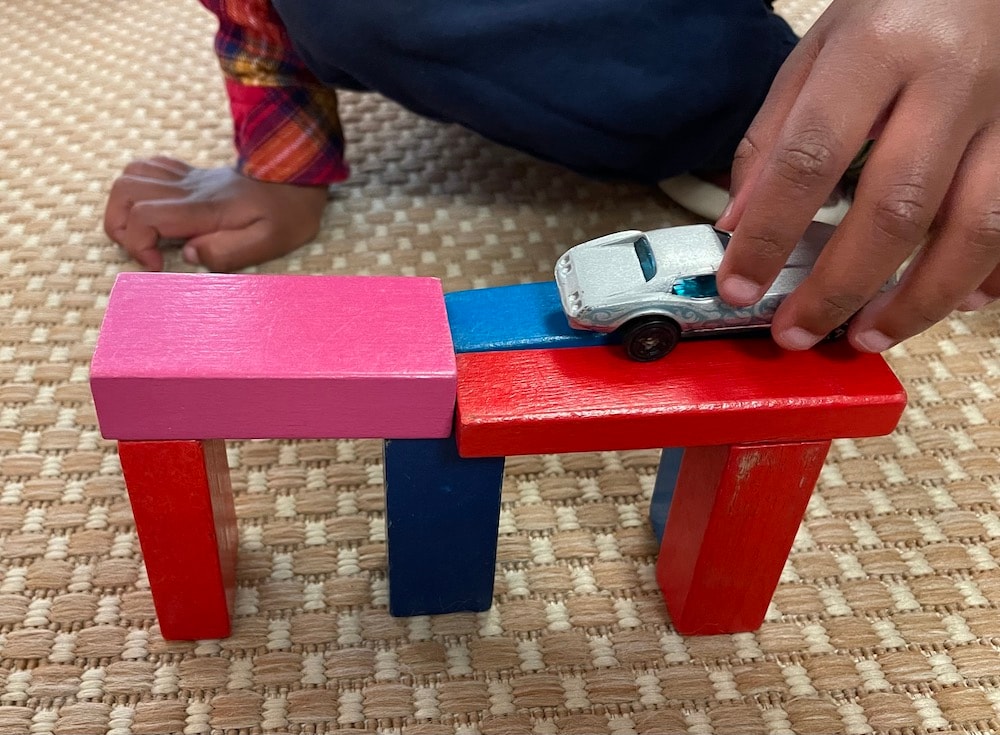
The science: Building a bridge with blocks will help children learn about important physics concepts, like gravity, weights of objects, tension and compression.
The activity: Challenge the child to build a long bridge with blocks that toy cars can drive across. According to Sally, blocks can be used as “simple STEM challenges in which children are asked to build structures like towers or bridges.”
9. Turning liquids into solids
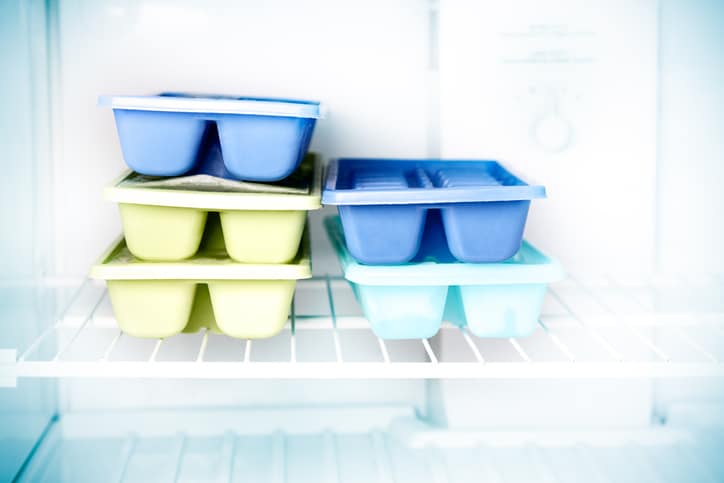
The science: This is a good science experiment to follow their learnings of how water takes shape. Freezing water can help children learn about the water cycle. We do a similar activity in the preschool I work in, and the children have a strong understanding of the water cycle — they could even tell you what evaporation means!
The activity: Have them help you fill up an ice tray and put it in the freezer. Make sure to make observations together about the water before putting it in the freezer, and ask the child to make a guess about what will happen to the water. Take the ice out when it’s frozen and talk about how it changed from a liquid to a solid. If it’s a hot day, you could take the ice outside and put it on the sidewalk to watch it evaporate.
10. Experimenting with matter to make Popsicles
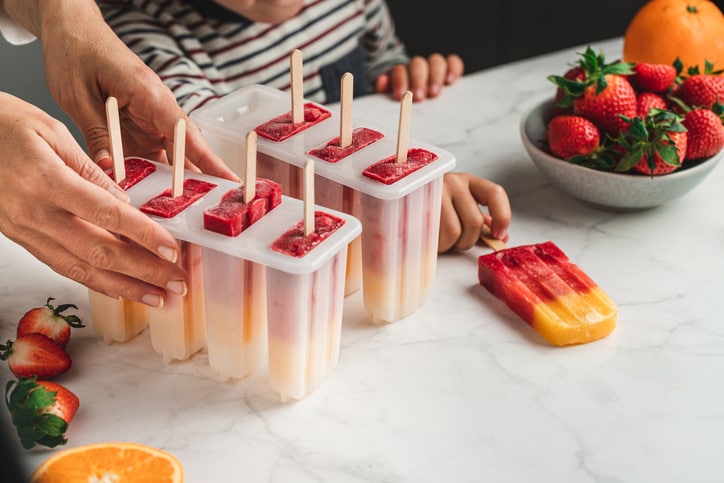
The science: Making popsicles is another way of teaching children about states of matter, especially about the differences between liquids, solids and gasses and how matter can change between the states.
The activity: Blend some fruit and water together until it makes a liquid, making sure to talk about the differences between the solid fruit and liquid water along the way. Then pour the mixture into a popsicle maker (or a paper cup with a popsicle stick in it) and put them in the freezer. When they’re done, they’ll be solid again, so you can talk about how the fruit went from solid, to liquid and back to solid. And you’ll have some yummy popsicles to enjoy!
11. Guessing the density of objects

The science: One way to learn about density is predicting if objects will sink or float. Even if the guesses aren’t correct, the process of making a guess can be very educational. “These types of STEM activities allow children to make observations, predictions, and even problem-solve which are critical skills in and out of the classroom,” says Macaluso.
The activity: If you’re looking for a science activity that also provides a sensory element, head to the bathtub for this sink or float activity. Fill the tub with water and grab some toys and items that are safe to put in water — some that will sink and some that will float. Ask the child to make a guess about what will sink and what will float. Then they test out their hypothesis by putting the item in the water and observing the results.
12. Using science to learn about the real world
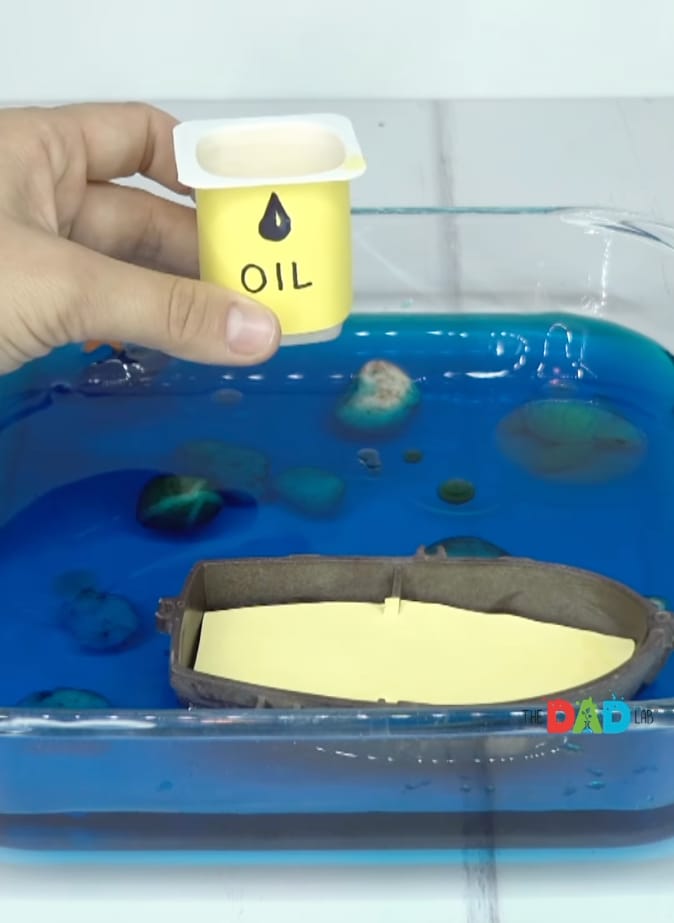
The science: This is another science activity for preschoolers that reinforces the idea of oil and water not mixing because of their densities but with an environmental twist that will help children understand real-world implications of science. It’s great to do experiments in a lab or at home, but it’s important that children understand how scientific processes play out in the real world, and why they should care.
The activity: The oil spill cleanup activity from TheDadLab is perfect for kids who love the ocean and animals. Fill a container with water and dye it blue with food coloring. Add some rocks, toy sea animals, and a toy boat if you have them to make it look like the ocean. Then fill a cup with vegetable oil and have the child pour it into the water to simulate an oil spill. Watch as it spreads around the ocean and explain how oil spills can harm animals and the environment. Then use a paper towel to soak up the oil and explain why it’s important to keep the ocean clean!





